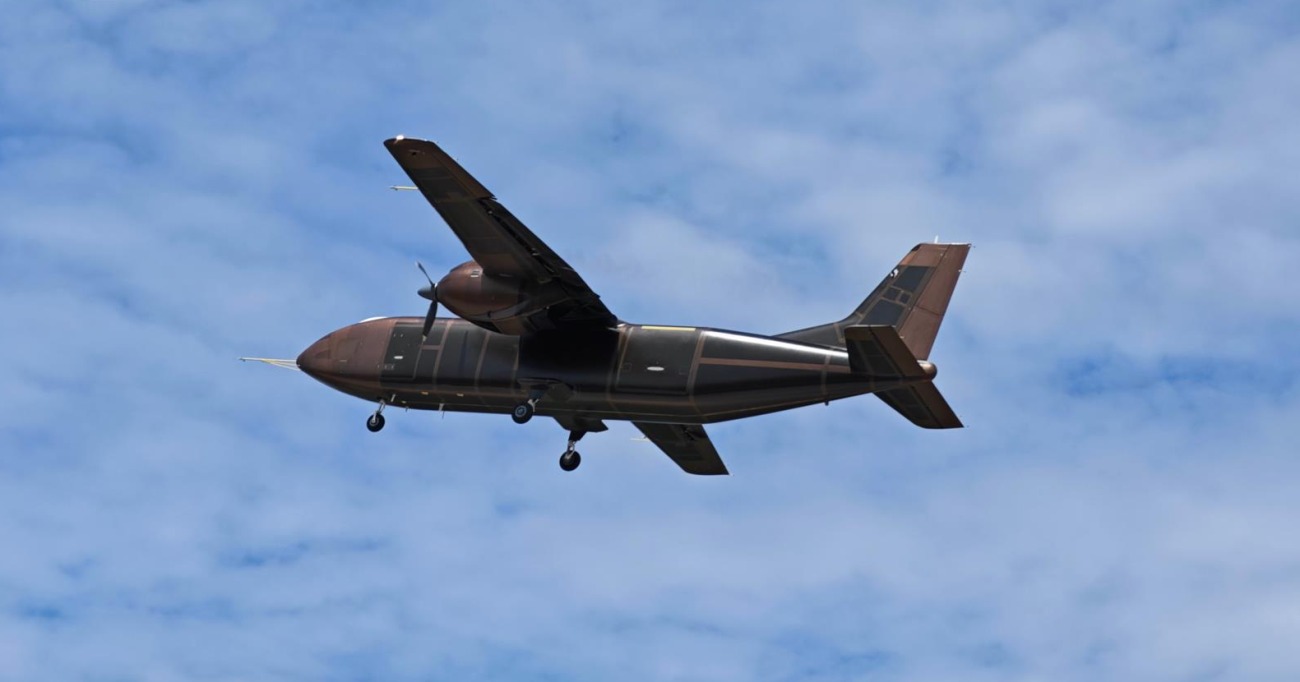Russian state arms manufacturer Rostec introduced a new transport drone at the Army 2024 Forum. The drone features long-range capabilities and a substantial cargo capacity.
The United Aircraft Corporation (UAC), which is part of Rostec, presented a Vertical Takeoff and Landing (VTOL) transport drone dubbed ‘S-76’ that can carry 300 kilograms of cargo over a distance of about 500 kilometers.
The corporation said in a statement that the drone was presented at the off-airfield base during the International Military-Technical Forum. Subsequently, a video was also released, which has since gone viral on social media. The drone is anticipated to be used for a host of civilian and military applications.
The UAC said in a statement (machine translated from Russian): “The United Aircraft Corporation… for the first time demonstrates a full-scale sample of a fundamentally new unmanned transport system off-airfield based with a vertical take-off and landing aircraft S-76. The exhibition presents a full-fledged flight model, which has already passed the first stage of flight experiments to practice the modes of vertical take-off, hanging, and landing.”
With its vertical take-off and landing capability, the drone will be able to carry out logistical duties, research, the transportation of commodities, etc., even in the most inaccessible and austere locations. UAC claims that the S-76 project will enable the deployment of autonomous unmanned transport systems in Russia, resulting in significantly more cost-effective and minimal human intervention air cargo transfers.
6/ Rostec is demonstrating S-76 VTOL drone capable of hauling 300kg up to 500km. At this point, its presented as a commercial UAV. https://t.co/ICceNzw4AY pic.twitter.com/FFPAvhz6Ik
— Samuel Bendett (@sambendett) August 12, 2024
The aircraft will operate entirely autonomously throughout takeoff, flight, and landing, requiring no operator input at all. Vladimir Artyakov, Deputy General Director of Rostec, said, “The unmanned platform from UAC will allow it to deliver cargo weighing up to 300 kg at a distance of up to 500 km and can provide new logistics opportunities, primarily in hard-to-reach areas. The aircraft does not require specially prepared sites and airfield infrastructure. That is, it is a convenient, fast, and efficient mode of transport.”
The S-76 program reportedly consists of several unmanned aircraft, landing zones, ground infrastructure, and a single operational control center that unites UAVs into a single airspace and communicates with end users.
Some reports stated the S-76 family of drones will initially consist of two models: a large version that can transport payloads up to 300 kilograms over a maximum distance of 1,000 kilometers and a compact version that can carry payloads up to 50 kilograms over a distance of 400 kilometers.
However, the EurAsian Times could not independently verify these claims.
With drones assuming a prominent role in modern combat, Russia has developed a variety of drones that can transport heavy cargo. In February 2024, Russia developed the TVS-2MS “Partizan” heavy transport drone, which can carry 1 tonne of cargo over a distance of 1,000 kilometers.

Earlier this year, reports indicated that Russia had developed a transport drone of the aircraft type TrAMP (transport aviation multifunctional platform) that can transport cargo up to 250 kilograms over distances of more than 600 kilometers. The drone is reportedly made to carry out duties considered dangerous for manned aircraft in inclement weather.
In June this year, the Russian battlegroup Dnepr developed the Perun strike-vehicle drone, which can carry large cargo, perform reconnaissance tasks, carry out search and rescue missions, including the evacuation of injured and wounded, and drop landing parties behind enemy lines.
The development of these drones is significant as they can be a more effective and affordable solution for moving vital payloads in high-risk settings compared to manned aircraft. Additionally, such drones can be stationed closer to the front lines than crewed aircraft, potentially cutting down the time needed to identify and evacuate soldiers.
However, Russia is not the only one developing transport drones. China has also developed an uncrewed UAV with long-range and heavy cargo capacity—once again underscoring that unmanned aircraft are the future of warfare.
China’s New Transport UAV Is Gigantic
China recently unveiled a twin-engine transport unmanned aircraft with a maximum range of 1,800 kilometers. On August 12, the manufacturer of the unmanned aerial vehicle (UAV) told the Global Times that China’s latest domestic twin-engine UAV transport aircraft was a significant advancement in the nation’s low-altitude technology.
The development of the UAV, which can load cargo in just 15 minutes, will also greatly increase the efficiency of regional logistics.

The UAV, which was created in response to growing market demand, successfully conducted its first flight test on Sunday, August 11, in Zigong, Sichuan Province, Southwest China. To date, it is the largest unmanned transport aircraft manufactured entirely in the nation.
A company manager who requested anonymity told the Global Times that the aircraft was intended for 600-1,800 km regional logistics routes. The manager said it had been developed to rectify the insufficient payload capacity and range observed in comparable products.
“It proved that large-scale commercial adoption of unmanned regional logistics is feasible and is expected to drive technological advancements in the industry that better meet the expanding market demand,” the manager added.
New unnamed cargo UAV has completed its maiden flight today, developed by Tengden.
Max payload: 2000kg
Length: 16.1m
height: 4.6mIt is the largest domestically produced unmanned transport aircraft currently developed in China . pic.twitter.com/gtHBIEIC8K
— Iron Lady (@nuwangzi) August 11, 2024
With over 90% of its activities controlled by a single button, it has a high level of automation that streamlines operations and makes it ideal for widespread usage in unmanned cargo transport.
The UAV uses 15% more room because it has the biggest payload compartment in its class. It requires only 15 minutes to load and unload freight, accommodates ordinary cargo containers, and integrates with mainline transit without the need for disassembly.
According to the manufacturer, the aircraft is perfect for international cargo transport because it can operate at high altitudes up to 7,000 meters, covering over 90% of feeder routes worldwide. It also has sophisticated safety measures like anti-icing and fireproofing.
To overcome technological difficulties, the manufacturer used a completely composite structure to lighten the UAV and increase payload capacity. Additionally, it used its most recent autopilot technology to improve the UAV’s usability.
“This approach, involving the development of a new model from scratch, has proven to be more demanding in terms of product design and manufacturing compared to merely modifying existing models,” the manager said.
- Contact the author at sakshi.tiwari9555(at)gmail.com
- Follow EurAsian Times on Google News




